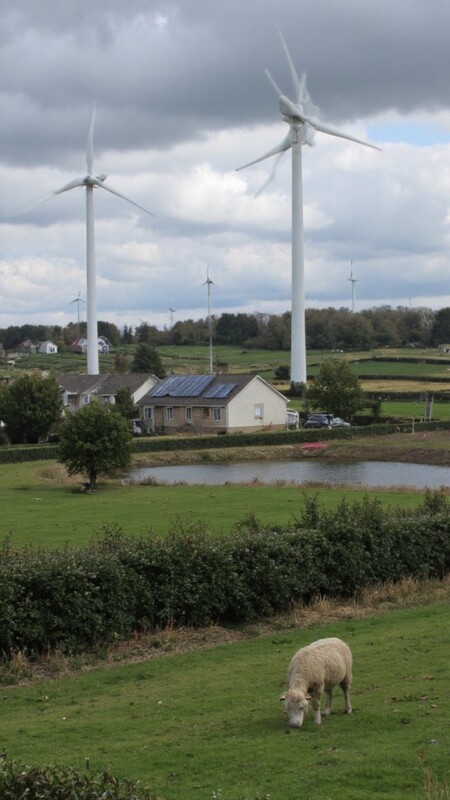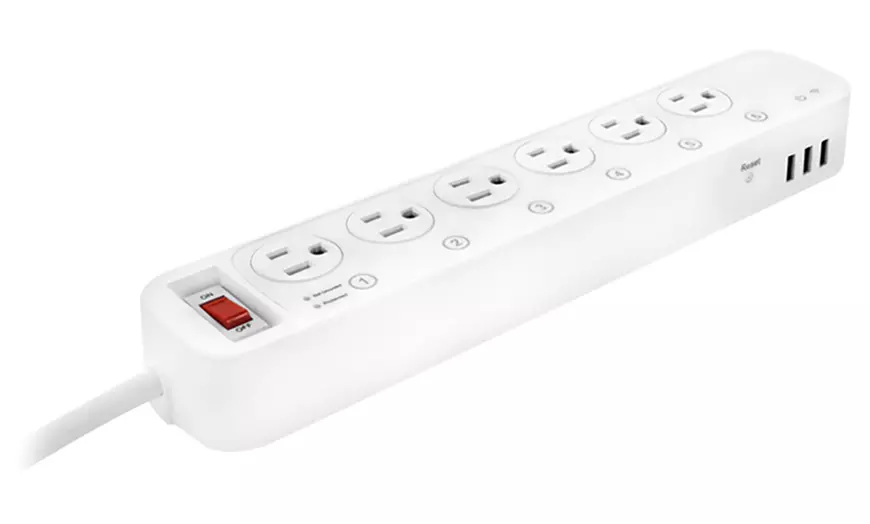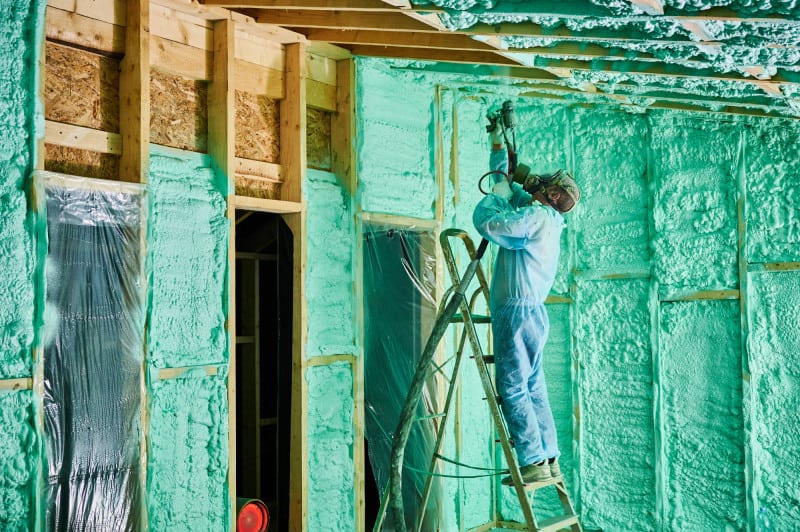You can sharply reduce wind turbine noise by optimizing blade designs with serrated trailing edges, streamlining casings to cut turbulence, and applying acoustic absorption materials at vibration hotspots. Improve drive train components to dampen mechanical noise, while predictive vibration monitoring spots anomalies early. Fine-tune blade angles, employ adaptive noise control algorithms, and implement strategic setbacks for quieter installations. Real-time sensor monitoring guarantees precise tracking. Investigate these proven strategies further for higher performance and quieter turbine operations.
Key Takeaways
- Add serrated trailing edges and biomimetic blade designs to reduce aerodynamic noise at the source.
- Upgrade nacelle and hub casings with streamlined shapes and vibration damping to minimize mechanical and airflow noise.
- Apply advanced acoustic absorption materials and metamaterial coatings to dampen both airborne and structural sound.
- Install real-time sensor networks for predictive vibration monitoring and active noise control based on environmental data.
- Use detailed noise mapping and dynamic operational adjustments, such as blade pitch and speed control, to limit noise during sensitive periods.
Optimize Blade Design With Serrated Trailing Edges
Although wind turbines are essential for clean energy, their noise emissions often limit operational capacity and siting.
By integrating serration patterns—sawtooth-like structures inspired by owl feathers—onto the trailing edges of turbine blades, you can greatly reduce noise generation.
These serrations improve aerodynamic efficiency by smoothing airflow, reducing turbulence, and minimizing vortex formation at the blade’s edge.
As a result, turbines equipped with serrated trailing edges show measurable decreases in total sound power level, especially in the low-frequency spectrum, which travels farther.
This noise reduction allows you to run turbines at higher capacities without breaching regulatory limits, enhancing Annual Energy Production (AEP) by up to 5%.
Serration retrofits are cost-effective, easily installed on existing blades, and adaptable for varying wind conditions, maximizing operational flexibility.
Streamline Turbine Casings for Quieter Operation
When you streamline turbine casings, you directly reduce noise emissions by minimizing airflow turbulence and vortex shedding around the nacelle and hub.
Employing advanced aerodynamic design, you optimize the casing geometry to facilitate smooth airflow, which cuts down on turbulence-induced noise and boosts turbine efficiency.
Advanced aerodynamic design streamlines casing geometry, reducing turbulence-driven noise and enhancing overall turbine efficiency.
Selecting smooth, weather-resistant materials prevents surface degradation that could increase drag and noise.
By customizing designs for specific turbine models, you improve aerodynamic performance and target noise reduction more effectively.
Incorporating computational fluid dynamics (CFD) and wind tunnel testing allows you to refine casing shapes, ensuring precise noise mitigation.
These streamlined casings not only reduce acoustic impact on surrounding environments but also enhance energy conversion rates, extend component durability, and present a visually appealing profile, advancing both performance and environmental compatibility.
Apply Acoustic Absorption Materials to Key Components
Beyond optimizing aerodynamic profiles, addressing wind turbine noise requires targeted application of acoustic absorption materials to key components. You can employ hybrid coatings, polymer-based damping materials, or advanced acoustic metamaterials to improve sound insulation across blades and towers. Integrating these materials—such as serrated trailing edge designs or fire retardant PUR foams—directly absorbs airborne sound, dampens structural vibrations, and modifies boundary layer behavior. Precision in material placement is vital for effectively reducing broadband and tonal noise without compromising structural integrity.
Here’s a comparative overview:
| Material/Technique | Primary Benefit |
|---|---|
| Acoustic metamaterial flaps | Broadband noise absorption |
| Hybrid blade coatings | Improved sound insulation |
| Polymer-based tower damping | Vibration dampening |
| PUR foam (open cell) | Low-frequency absorption |
| Composite noise barriers | Structural reinforcement |
Careful selection guarantees regulatory compliance and operational efficiency.
Minimize Mechanical Noise Through Drive Train Improvements
While aerodynamic optimizations address a significant portion of wind turbine noise, mechanical noise from the drive train remains a critical factor, particularly in the 200–800 Hz range generated by the generator, main shaft, and gearbox.
To minimize this, prioritize gearbox optimization and vibration damping across all drive train components. Employ active noise control systems that generate real-time cancellation signals targeting fluctuating tonal noise.
Prioritize gearbox optimization and vibration damping, and use active noise control to address fluctuating tonal noise in wind turbines.
Integrate novel generator winding configurations—such as a 30-degree electrical angle separation between winding units—to reduce electromagnetic disturbances at their source.
Structural reinforcement, leveraging technologies like COMPOWIND, interrupts noise transmission by reducing interface accelerations and preventing frequency matching.
Combine these with advanced isolation techniques and dynamic analysis to further suppress mechanical noise, all while maintaining vital heat dissipation and prolonging turbine service life.
Implement Predictive Vibration Monitoring Systems
Addressing mechanical noise at its source is only part of the solution—continuous, data-driven oversight is likewise significant for long-term turbine performance and sound mitigation.
Implementing predictive vibration monitoring systems enables you to track real-time structural integrity and mechanical behavior. With advanced vibration analysis, you can detect anomalies early, plan targeted maintenance scheduling, and avoid costly emergency repairs. This data-centric approach leads to optimized operational yield and extended component lifespan.
- Early Fault Detection: Vibration analysis identifies subtle deviations, such as bearing or gear wear, before they escalate.
- Targeted Maintenance Scheduling: Schedule interventions during low wind periods, minimizing downtime and lost output.
- Component Longevity: Address vibration-induced stress to extend the life of critical parts.
- Cost Efficiency: Proactive monitoring reduces repair costs and improves resource allocation.
Employ Active Noise Cancellation Technologies
Harnessing active noise cancellation (ANC) technologies transforms wind turbine sound management by generating anti-noise signals that directly counteract unwanted acoustic emissions.
You’ll find that ANC systems rely on blade-mounted sensors and tower-based microphones to conduct real-time noise mapping and sound profiling. These sensors feed data to adaptive filtering algorithms—such as the FxLMS algorithm—which dynamically generate anti-noise signals based on current blade positions and turbulent flow conditions.
Multi-point speaker arrays, integrated on nacelles and towers, emit these precisely tailored signals to neutralize noise before it propagates. Environmental sensors further optimize ANC performance by adjusting strategies for geographic and meteorological variables.
The result is thorough, plant-wide noise suppression, maintaining turbine efficiency and minimizing health impacts without increasing aerodynamic drag or considerably affecting power output.
Fine-Tune Blade Angles for Reduced Acoustic Output
Although wind turbine sound originates from multiple sources, fine-tuning blade angles directly influences aerodynamic noise by optimizing the interaction between blade surfaces and turbulent airflow.
Blade angle optimization utilizes pitch control systems to dynamically adjust blade orientation, targeting substantial noise reduction without compromising energy output. This approach integrates advanced noise reduction strategies supported by computational fluid dynamics (CFD) and acoustic modeling, enabling precise real-time modifications.
You’ll find that the interplay between blade pitch, wind conditions, and turbulence intensity creates complex acoustic signatures, demanding adaptive solutions.
Consider these key insights:
- Optimize blade pitch dynamically to minimize aerodynamic noise while maintaining power efficiency.
- Utilize CFD simulations to predict noise emissions under varying operational scenarios.
- Implement serrated trailing edges and biomimetic designs to further reduce acoustic output.
- Conduct field measurements to validate and refine noise reduction strategies.
Utilize Adaptive Noise Control Algorithms
While optimizing blade angles reduces aerodynamic noise at the source, advanced noise control algorithms add a dynamic layer of mitigation by targeting residual sound in real time.
By deploying adaptive algorithms such as the filtered-x least mean square (FxLMS) method, you can generate anti-noise signals that destructively interfere with unwanted sounds.
Blade-mounted sensors and actuator arrays continuously analyze turbulent flow and blade orientation, feeding data into real-time adaptive algorithms for precise noise mitigation.
Multi-point speaker systems and secondary sound sources, strategically positioned on turbine structures, counteract both aerodynamic and mechanical noise.
Environmental sound level monitoring enables the system to modify mitigation tactics instantly, ensuring compliance with local noise regulations.
Coordinated control strategies also allow for site-wide acoustic optimization without sacrificing energy output.
Enforce Strategic Setbacks and Operational Adjustments
Strategic setbacks and operational adjustments remain essential for mitigating wind turbine noise at both the planning and operational stages.
By implementing setback strategies, you improve noise abatement and regulatory compliance, while increasing operational efficiency.
Thorough noise mapping and early-stage assessments help refine turbine placement and minimize sound propagation.
During operation, you can dynamically adjust performance to further reduce noise without compromising energy output.
Consider these data-driven actions:
- Maximize distance between turbines and residences to decrease perceived noise intensity.
- Use detailed noise mapping for precise turbine siting, accounting for barriers and reflections.
- Lower rotational speeds and optimize blade pitch to maintain operational efficiency with minimal noise.
- Schedule selective shutdowns during sensitive periods to address community concerns.
These approaches deliver measurable reductions in wind turbine noise.
Integrate Real-Time Sensor Monitoring and Control
Several advanced monitoring solutions now enable wind farms to precisely track and control turbine noise in real-time.
By leveraging sensor integration—utilizing accelerometers, current clamps, and environmental microphones—you can continuously collect data on noise output, wind speed, and direction. This high-resolution data stream supports control optimization, allowing for immediate operational adjustments, such as active noise control or targeted power curtailment, when noise thresholds approach regulatory limits.
AI algorithms improve these systems by distinguishing turbine-generated noise from ambient sounds and identifying patterns that may require intervention.
Environmental sensors further enable adaptive responses by detecting external noise levels and aligning turbine orientation to minimize impact on sensitive zones.
This integrated, data-driven approach guarantees compliance, optimizes energy production, and delivers precision in noise management.
Conclusion
By applying these ten advanced strategies, you’ll greatly reduce wind turbine noise emissions. Optimizing blade aerodynamics, integrating serrated trailing edges, and using acoustic absorption materials directly target dominant noise sources. Predictive vibration monitoring and adaptive control algorithms enable real-time mitigation, while mechanical improvements minimize structural sound. Data confirms that combining these precision techniques can lower noise levels by up to 10 dB(A), ensuring quieter operations and increased community acceptance without sacrificing energy output or system reliability.





